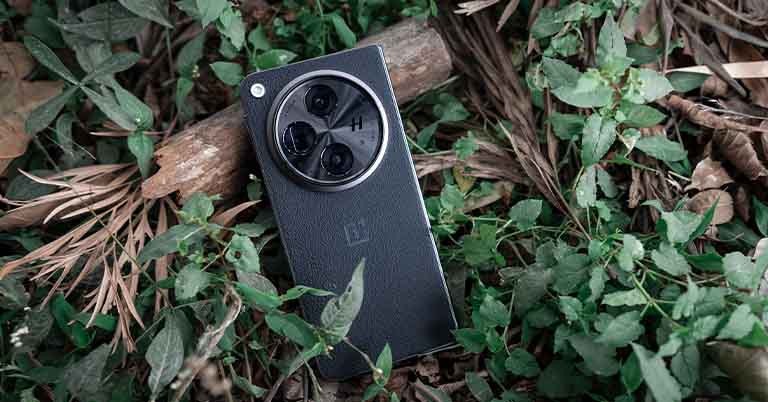
Here’s my full review of the OnePlus Open after using the phone for almost a month. But first, some insight into the state of foldables itself. So foldable phones have been a thing for a while now, right? At a time when the smartphone industry has been on a continuous decline, the foldable segment is growing at a surprisingly impressive pace. But for one reason or the other, not everyone’s convinced that foldable is the future.
Even a bunch of my colleagues say they’d rather buy a normal, slab-style flagship phone instead of one that folds. And I guess I can understand where they’re coming from. After all, the luxury of being able to fit a tablet-sized device into your pocket comes at a price. Both literally and figuratively. Plus, it doesn’t help that Samsung is pretty much the only brand selling foldables at a truly global scale either.
But that could all be changing pretty soon. Or at the very least, I think Samsung has had a really rude awakening with the OnePlus Open. It’s the very first foldable from OnePlus — although it’s technically a third-gen OPPO phone — which has been making waves around the internet ever since it was first announced.

And after using it as my primary phone for a couple of weeks now, the one thing I can tell you right away is that this is easily the most well-made book-style foldable you can find in the global market. I even believe the OnePlus Open has the potential to finally convince people to get in on the foldable fun.
OnePlus Open Review: Specifications
- Body: IPX4 splash-resistant, Metal frame
- Folded: 153.4 x 73.3 x 11.7 – 11.9 mm
- Unfolded: 153.4 x 143.1 x 5.8 – 5.9 mm
- Weight: 239 gm (Voyager Black), 245 gm (Emerald Dusk)
- Display:
- Cover: 6.31-inch Fluid AMOLED, 120Hz refresh rate, 240Hz touch sampling rate, 1,400 / 2,800 nits brightness (HBM / peak)
- Main: 7.82-inch Fluid AMOLED, 120Hz refresh rate, 240Hz touch sampling rate, 1,400 / 2,800 nits brightness (HBM / peak)
- Resolution:
- Cover: 2K (2484 x 1116 pixels), 20:9 aspect ratio, 431 PPI
- Main: 2K (2440 x 2268 pixels), 1.07:1 aspect ratio, 426 PPI
- Other Properties: Ceramic Guard (Cover display only), Dolby Vision, LTPO 3.0
- Chipset: Qualcomm Snapdragon 8 Gen 2 (4nm Mobile Platform)
- Memory: 16GB LPDDR5X RAM, 512GB UFS 4.0 storage (fixed)
- Software & UI: Android 13 with OnePlus’ OxygenOS 13.2 on top
- Rear Camera: Triple (with LED flash)
– Primary: 48MP 1/1.43″ Sony LYT-T808 sensor (24mm), f/1.7, OIS, EIS
– Ultrawide: 48MP 1/2″ Sony IMX581 sensor (14mm), f/2.2, 114º FOV, EIS
– Telephoto: 64MP 1/2″ OmniVision OV64B sensor (70mm), f/2.6, 3x optical zoom, Up to 120x digital zoom, OIS, EIS - Selfie Camera:
– Cover: 32MP 1/3.14″ sensor (22mm), f/2.4, EIS
– Main: 20MP 1/4″ sensor (20mm), f/2.2, EIS - Audio: Triple speakers with Dolby Atmos audio, No headphone jack
- Security: Side-mounted (capacitive), Face unlock
- Sensors: Accelerometer, Ambient light, E-compass, Flick-detect, Infrared, Gyroscope, Proximity, Sensor core
- Connectivity: Dual-SIM (Nano), Wi-Fi 7 (tri-band), Bluetooth 5.3, GPS / A-GPS / Galileo / Glonass / BeiDou / QZSS, NFC, 4G LTE (VoLTE), 5G
- Battery: 4,805mAh battery with 67W wired charging, No wireless charging
- Color Options: Voyager Black, Emerald Dusk
- What’s In The Box: OnePlus Open, 80W power adapter, USB-A to USB-C cable, Protective case, SIM ejector, User manual and other documents
- Price In Nepal: N/A
- USD 1,699 in the US | INR 139,999 in India
OnePlus Open Review:
Okay. The most significant way the OnePlus Open goes about convincing folks to get a foldable is with its design and build quality. This is easily the most “normal-feeling” foldable I’ve used yet, beating Samsung’s Galaxy Folds by a mile.
Design and Build
- Folded: 153.4 x 73.3 x 11.7 – 11.9 mm
- Unfolded: 153.4 x 143.1 x 5.8 – 5.9 mm
- Ceramic Guard (cover display), Glass/leather back, Metal frames
- IPX4 splash resistant
Of course, it’s still a bit bulkier than normal smartphones but I think this is something you can get used to effortlessly. Emphasis on “effortlessly”. I also like how OnePlus has managed to shave off quite a bit of weight to make this guy feel as comfortable as possible.
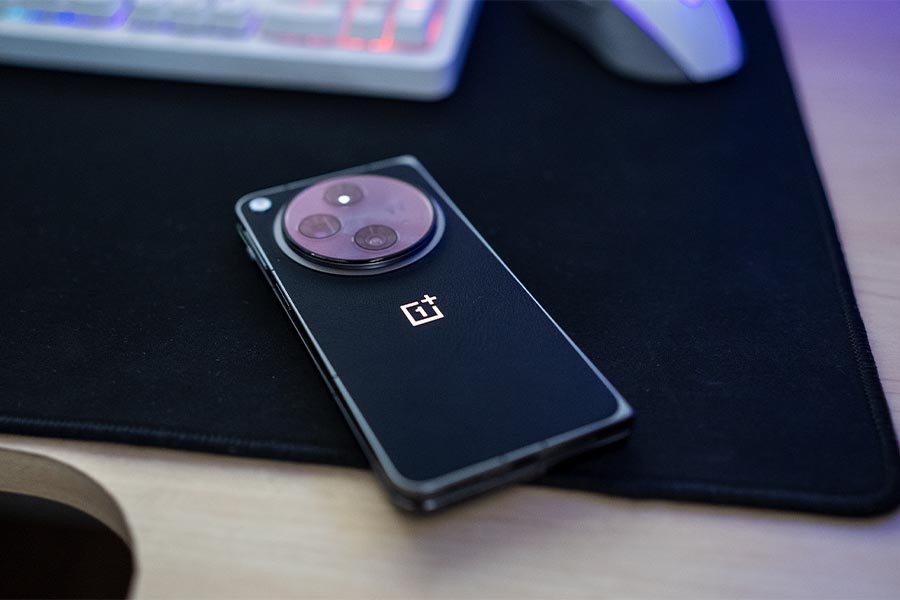
There are all sorts of things at play here like using lighter build material to reducing the number of components on the hinge, but the bottom line is that the OnePlus Open really doesn’t feel out of the ordinary in the hand. Or in the pocket. And OnePlus assures that all of this doesn’t come at a sacrifice of the phone’s durability as well.
One million folds.
I don’t know how OnePlus did it but it says this thing can survive a million folds. That’s five times more compared to what Samsung promises for its foldables, which is just ridiculous. In fact, the OnePlus Open is also the first of its kind to be certified by TÜV Rheinland in a folding test. I barely average 50 folds a day — because I can get most of my work done on this lovely cover display itself — so I’m not worried about its hinge dying on me anytime soon.
On that note, its “Flexion Hinge” — as OnePlus calls it — is also pretty interesting. It’s got a gapless design as you’d expect, but the one thing that threw me off at first is just how… gentle it is. I’ve used every Samsung foldable from the three-year-old Galaxy Z Fold 2 (review) to the latest Galaxy Z Fold 5, and the one thing that stands out to me about Samsung’s hinges is how firm they are.
To the point where my brain has subconsciously attributed it as a sign of superior durability.
But things couldn’t be more different on the OnePlus Open as this guy pops open without much effort. It still feels a little weird to me after all this time but I gotta say I like it this way as it makes opening the phone much, much more effortless. Although this relatively loose hinge means it can’t stand on its own at whatever angle you want. Unlike the Fold 5.
IPX4 rating to relieve your rainy woes
The OnePlus Open doesn’t skip an official IP rating either. Yes, its IPX4 splash resistance isn’t as tough as Fold 5’s IPX8 rating — and a far cry from the IP68 dust and water resistance you’d find on normal flagship smartphones — but it should keep the phone safe from minor water splashes just fine.
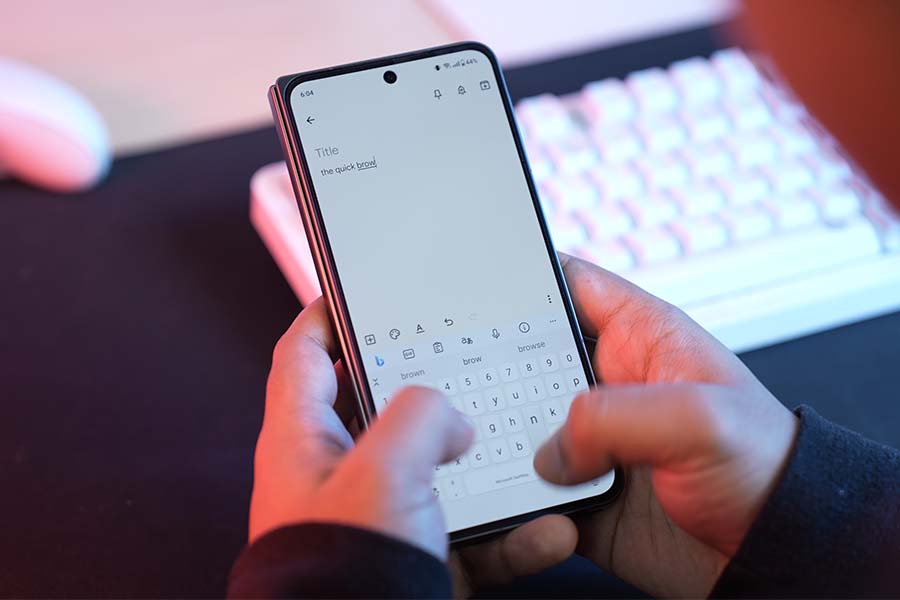
So yeah, as far as design, durability, and comfort go, the OnePlus Open is as close as it gets to a normal smartphone. Yes, a little bit of care goes a long way as well, but if those concerns were holding you back from getting a foldable, that’s no longer a headache with the Open. There are still a few things I wish OnePlus had done differently, like the button placement or this awkwardly massive camera hump but I can live with it.
Displays
- Cover: 6.31-inch 120Hz AMOLED (2K), 20:9 aspect ratio
- Main: 7.82-inch 120Hz AMOLED (2K), 1.07:1 aspect ratio
Other than this, the biggest reason you’d want a foldable phone is the display — no — the displays themself. And all the possibilities they unlock.
Let’s start with the cover screen in this review because as I said before, the OnePlus Open is pretty special in this case because the best compliment I can think for it is that it’s… very normal. Yep. You’re looking at a 6.3-inch OLED panel with a regular 20:9 aspect ratio, so getting around it feels as typical as can be. And all the complaints I have with the narrow cover display on Samsung’s foldables are next to non-existent on the Open.
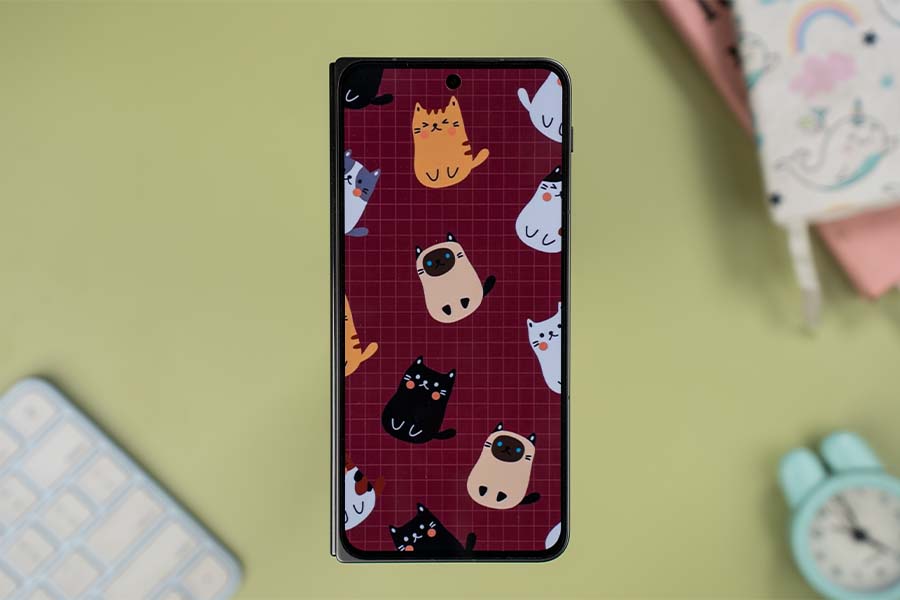
OnePlus has blessed it with all the colors, brightness, sharpness, and smoothness in the world too, while it’s also covered with a proprietary “Ceramic Guard” layer that’s supposedly 20% tougher than Corning’s Gorilla Glass Victus. And a…ll of this extends to this gorgeous main display as well. Except that it’s protected by ultra thin glass (UTG) instead of Ceramic Guard.
The OnePlus Open’s 7.8-inch main display, with its almost squarish aspect ratio (that’s slightly taller than it is wide), is easily the most fun I’ve had out of any phone I’ve tested yet. And that’s saying something. I’ll get into all its multitasking prospects in just a minute but everything from streaming videos to playing games and just… going about your everyday chores is an absolute delight here.
The multimedia experience stands out in particular with Dolby Vision playback support, which makes full use of that 2,800 nits of peak brightness. Things only get better with the room-filling sound from its triple speakers that are plenty rich in terms of everything from bass, mids, and highs.
Where’s the crease?
Getting back to the display portion of the review, I also like how the OnePlus Open has an anti-glare layer to keep light reflections to a minimum. And it’s got the best crease out of any foldable I’ve tried. Hands-down. You can see it from certain angles with the screen off but it’s actually kinda hard to feel even when I’m deliberately running my finger through the display. While I’ve always found the deeper crease on Samsung’s Folds to be a mild nuisance and nothing more, I definitely appreciate the top-notch engineering on this thing.
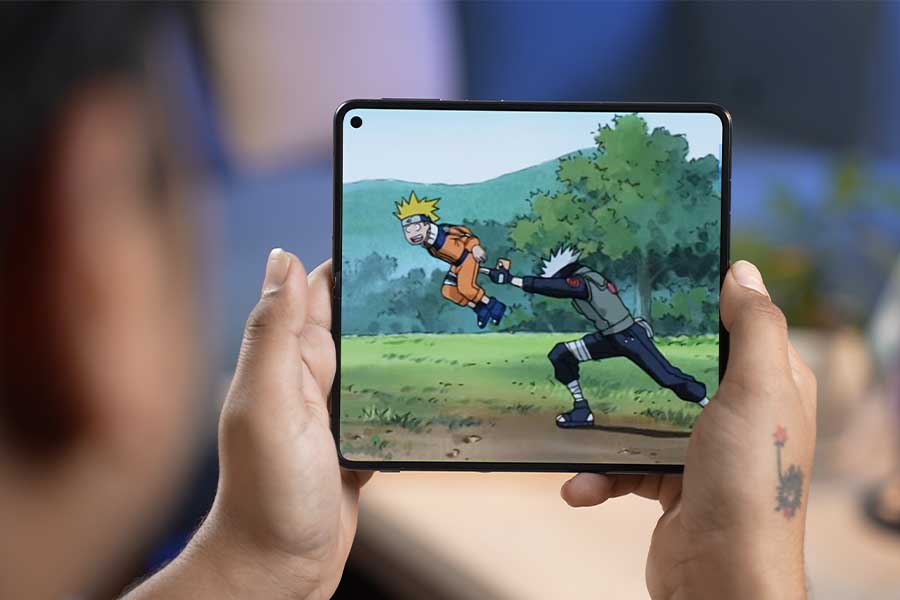
And it’s just another example of how Samsung has been outdone by the competition in the foldable space. You know what? The OnePlus Open supports stylus input too even though OnePlus doesn’t mention anything of it anywhere. I guess I can see why because it doesn’t work with OnePlus’ own stylus and you’re gonna have to buy an OPPO Pen instead — that’s designed for OPPO foldables.
Now, the only thing that’s been kinda bugging me is that the dynamic refresh rate option on my OnePlus Open doesn’t seem to work at all. OnePlus says both these screens use LTPO 3.0 tech to bring the refresh rate down to as low as 10Hz on the cover display and just 1Hz on the main one — but for some reason — it only ever switches between 60 and 120Hz depending on what app you’re using.
Performance
- Qualcomm Snapdragon 8 Gen 2 chip (4nm)
- 16GB LPDDR5X RAM, 512GB UFS 4.0 storage (fixed)
- Android 13 with OnePlus’ OxygenOS 13.2 on top
- 4 years of OS, 5 years of security updates guaranteed
Let’s talk about performance now. Even before I set it up for review, I knew performance was never going to be a concern with the OnePlus Open. The Snapdragon 8 Gen 2 is a tried-and-tested performer, which has been paired with a colossal 16 gigs of RAM and 512 gigs of storage to make sure there’s plenty of room for all your apps and files.
While I understand that OnePlus couldn’t have shipped the Open with the new Snapdragon 8 Gen 3 chip, this is a pretty common compromise I’ve seen with foldables; they almost always launch with the last-gen processor. And I discovered something unexpected with its gaming capabilities too. I’ve tested a lo…t of phones with the 8 Gen 2 chip so far and this is somehow near the bottom of the list as far as fps stability and all that goes.
Okay, as you can see from this graph, the OnePlus Open clearly struggles to play Genshin Impact at the highest graphics settings. There’s a noticeable frame dip after just three minutes into the game whereas I was only getting like 48 fps on average after the 10-minute mark.
It’s not that the phone got unbearably hot either, so I think this is more like OnePlus defensively throttling performance to make up for the phone’s poor cooling solution. Even a couple of high-fps optimized titles — that play fine on 8 Gen 2-powered OnePlus 11 (review) — are locked to just 60 fps here.
Multitasking madness
All of this is just your usual smartphone stuff but multitasking on the main display is where this foldable truly shines the brightest. Talking about the usual stuff like split screen and floating windows sounds almost boring at this point but thankfully, OnePlus has found a whole new way of making the most out of all this screen space.
It’s called “Open Canvas” and I must say that’s a really fitting name for this feature. And one I hope makes its way to OnePlus tablets and smartphones as well.
Basically, I can now resize multiple apps on my screen as I see fit and even drop one on the bottom for a much more efficient multitasking experience. Instead of having all the apps sitting in a congested little space, the OnePlus Open just lets me swipe through them, which is a very elegant — almost laptop-like — solution if you ask me.
I can have up to four apps open here (including one on a floating window). When trying to achieve something similar on Samsung’s Fold 5, it looks so much cleaner on OnePlus.
If there’s one suggestion I could make, it’s that I wish Open Canvas would somehow utilize the entire screen when I want to view the content of all three apps at once. Right now, all it does is minimize them into this squeezed layout, making things harder to see.
Anyway, I’m also really happy to see how OxygenOS itself is super snappy and responsive to match the OnePlus Open’s character. I have encountered a few bugs here like that dynamic refresh rate thing I mentioned before and how saving my app combo doesn’t show up on the homescreen for the longest time, but I’m pretty confident OnePlus can fix it all with future updates. It has to.
Cameras
- Triple camera setup at the back
- 48MP main, 48MP ultrawide, 64MP telephoto
- 32MP selfie (cover display), 20MP selfie (main display)
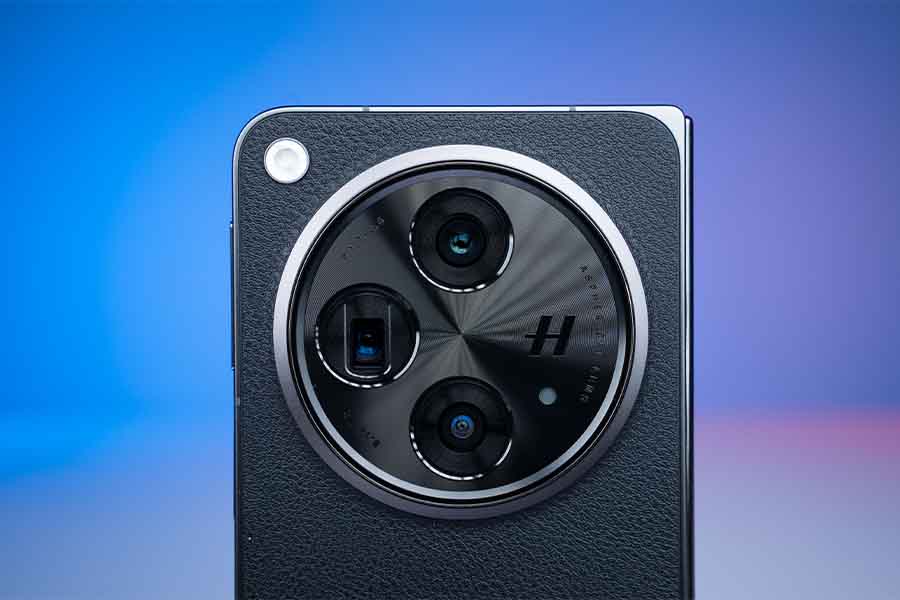
Alright. With foldables, one of the biggest trade-offs that buyers often have to face is the camera quality. Smartphone makers (outside of China at least) have been portraying this “can’t have it all” story with flagship cameras on a foldable so far, and I 100% disagree with this. Because if you’re paying top dollars for a phone, it simply doesn’t make sense to settle with anything but a flagship camera system in today’s day and age.
But the OnePlus Open promises something different entirely. It’s got a proper flagship-grade imaging system, including a new 48MP Sony LYTIA-T808 sensor with “pixel stacked” technology that’s supposedly on par with the 1-inch type IMX989 sensor that you find on something like the Xiaomi 13 Pro (review). Then there’s a 48MP ultrawide camera next to a 64MP periscope telephoto lens with 3x optical and 6x lossless in-sensor zoom.
All of this has some Hasselblad help too — and as a standalone device — I gotta say this is easily the best OnePlus camera phone yet.
Daytime Images
During the day, photos from its main and ultrawide sensors retain plenty of details and dynamic range. It doesn’t boost the saturation level to make everything pop and look unnatural either. While the zoom shots from its periscope camera are great too. Once again a lot of details and good color science to enjoy.
But in challenging conditions, it struggles with things like managing the highlights and contrast levels despite the terrific camera hardware.
And this is one area where I’ve found the iPhone 15 Pro Max (review) — which is currently my favorite camera phone — to deliver more consistent results.
OnePlus Open’s photos can occasionally turn out rather hazy and it picks up lens flare quite easily too. Whereas the biggest area of improvement this thing needs right now is better consistency in image quality from all three cameras.
Then again, I think this is something OnePlus can get right with a couple of software updates since it has only received one camera-focused update so far.
Portrait Images
It can also shoot pretty nice-looking portraits. There are three focal lengths to choose from and the ones from the 3x 70mm lens look pretty nice when there’s enough light.
Selfie Images
For selfies, there’s a 32MP sensor on the cover display and a 20MP on the main one. And like all foldables out there, you can also take selfies from its main cameras. Although that 20MP sensor on the main display isn’t half bad either.
Nighttime Images
But when it gets dark, that pixel-stacked Sony sensor seriously starts flexing its muscles. By arranging photodiodes and pixel transistors vertically — on top of each other — instead of laying them side by side, this sensor can take in much more light.
And the lowlight shots from the OnePlus Open come off really balanced. With not much noise, on-point contrast, good highlights, and everything else. The best thing about it is that you don’t even need to switch to the dedicated “Night Mode” for all this.
Videography
For the most part, I’m pretty impressed with its videography side of things as well. Even at 4K 60 fps, it shoots fairly steady videos. Exposure lock needs some work in particular but you can expect great videos from all three cameras on the OnePlus Open.
So overall, I’m quite fond of the point-and-shoot experience with this guy. And calling it the best camera on a foldable won’t be much of an exaggeration.
Compared to the Z Fold 5, I found the OnePlus Open to be competing pretty well on most fronts. I do like the way Samsung handles contrast a bit better on most occasions. But let me once again remind you that the Open really hasn’t tasted that many updates to refine its cameras.
Battery
- 4,805mAh battery (67W wired charging)
- No wireless charging support
Finally, I’m a little surprised to see that the battery life on the OnePlus Open is actually not that bad. An average of 6 hours of screen time on relatively heavy usage on both cover and main display? I really can’t complain about that.

And it fills up quite fast too. With the 80W brick you get inside the box (although it only supports 67W charging, by the way), OnePlus Open takes just around 45 minutes for a complete refill. But if wireless charging is something you care about, OnePlus is ready to break your heart once again since that’s missing here.
OnePlus Open Review: Conclusion
Alright, let’s wrap up this OnePlus Open review. And it pretty much goes without saying that the OnePlus Open is one heck of a smartphone. Easily the best foldable out there the biggest threat to Samsung’s “Galaxy Z Fold” empire. But more importantly, I think it actually has what it takes to get people excited about foldable phones as well.
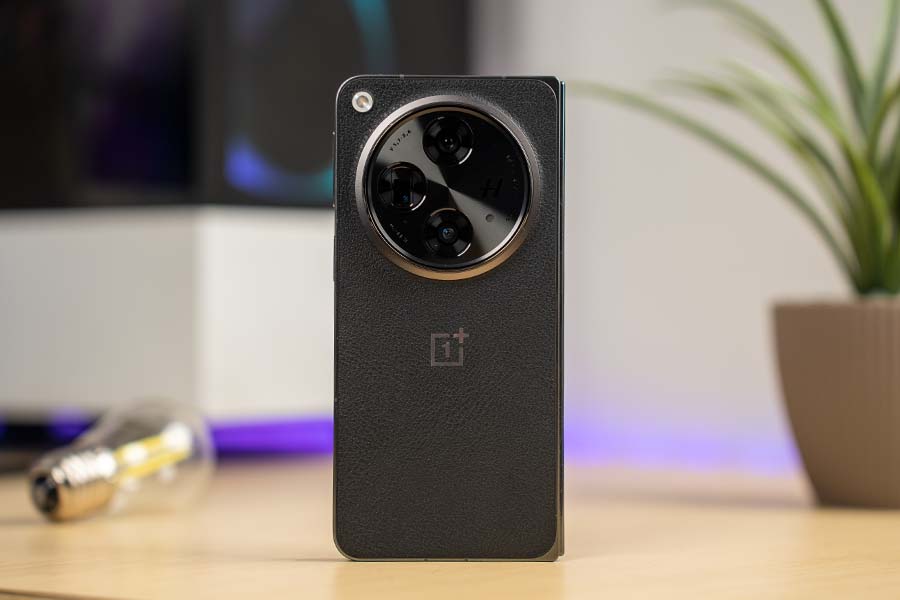
With its “normal” design that transforms from a regular smartphone to a mini tablet in seconds, a couple of top-notch displays, an excellent software system, alongside decent cameras and battery backup, the OnePlus Open really is this no-compromise foldable that you should look into if you’ve been itching to get in on the foldable fun.
Of course, this thing doesn’t come cheap. Although OnePlus has undercut its Samsung alternative by a pretty significant margin. And by all means, I’m not saying this is perfect or anything either. But if the OnePlus Open isn’t enough to convince you to switch to a foldable phone, I don’t see what will. At least for now.
- Watch our video review of the OnePlus Open
OnePlus Open Review: Pros and Cons
Pros:
- Every bit as good as a flagship phone
- Fantastic set of displays
- Top-notch performance, excellent multitasking
- Flagship-level rear cameras
- Decent battery backup
Cons:
- Expensive
- No wireless charging
- Adaptive refresh rate doesn’t work
- Cameras could use some fine-tuning






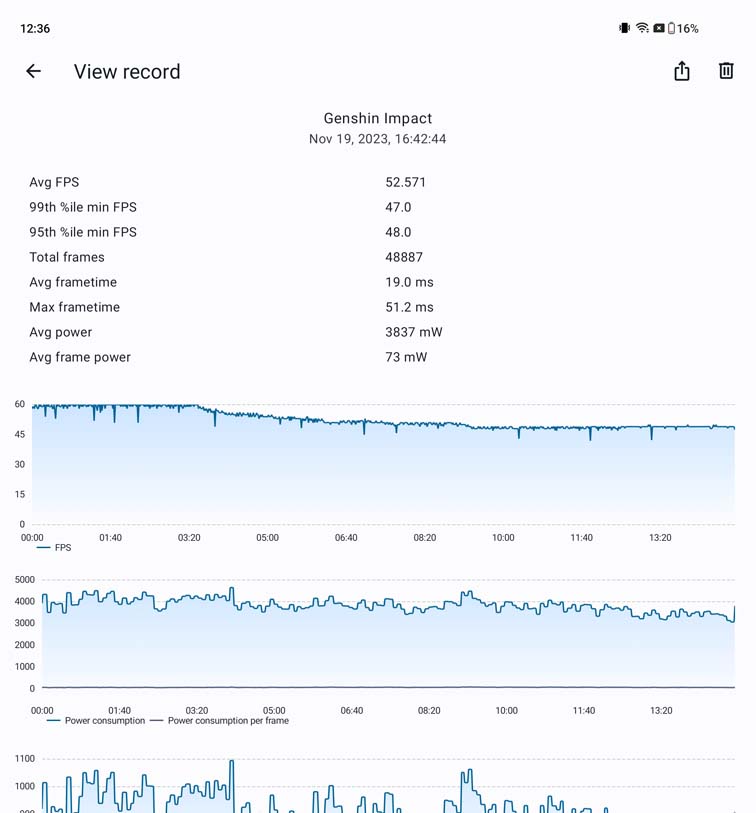




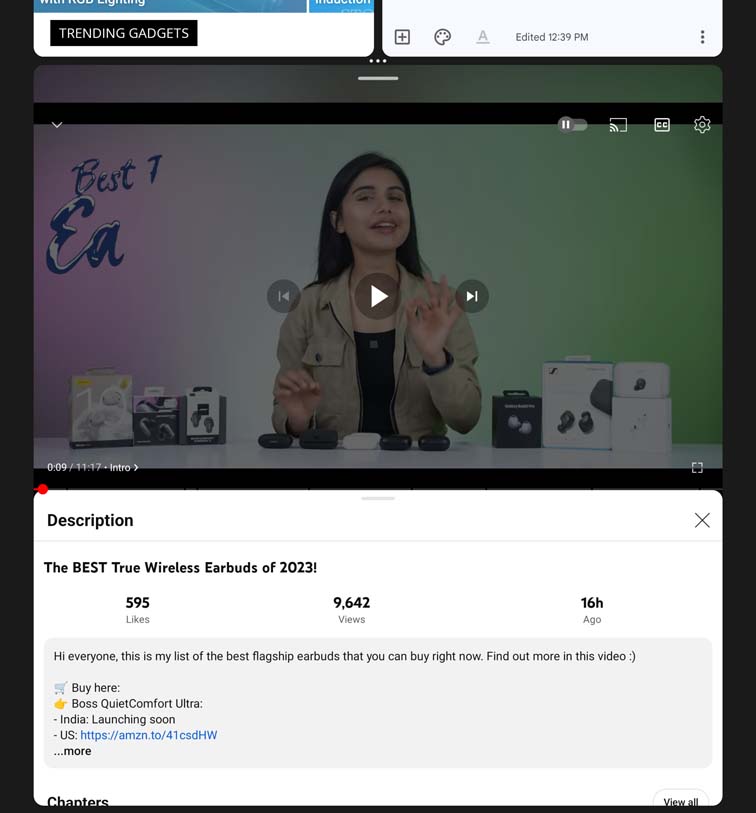
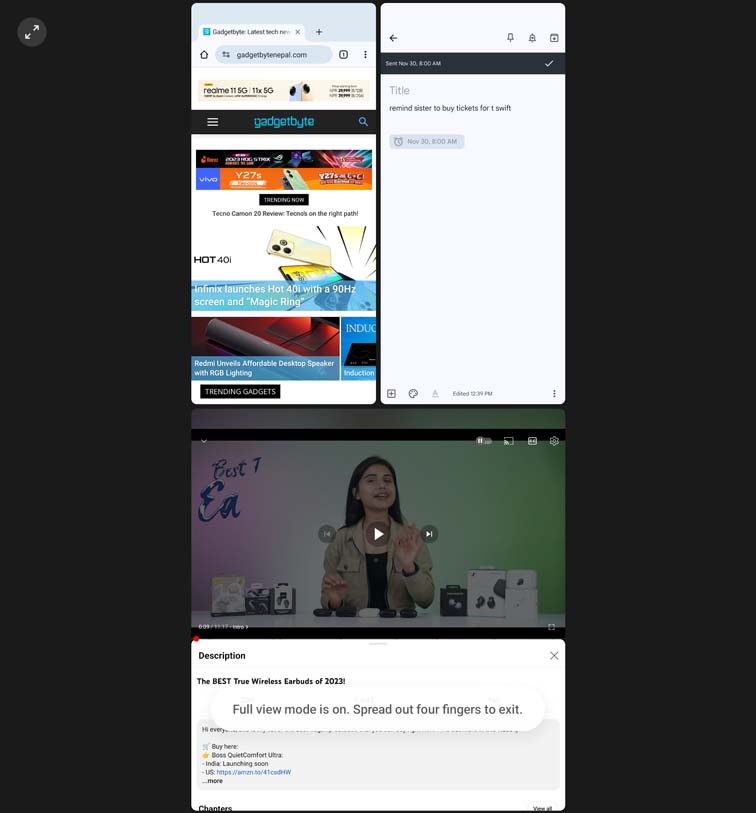






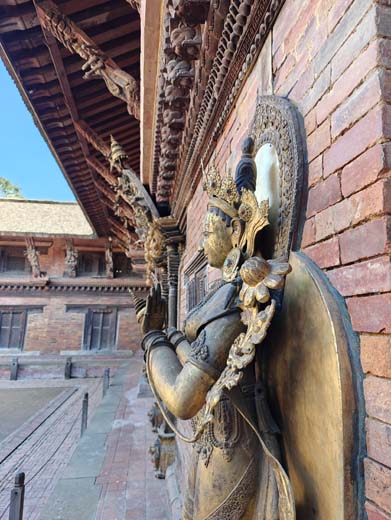


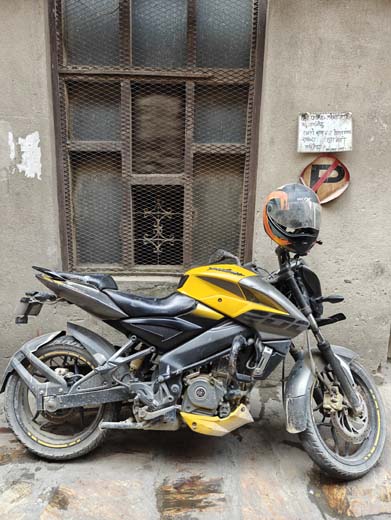

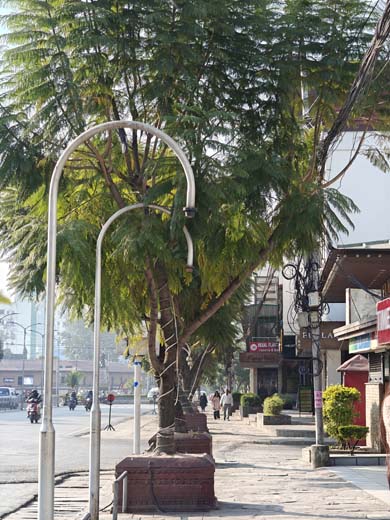



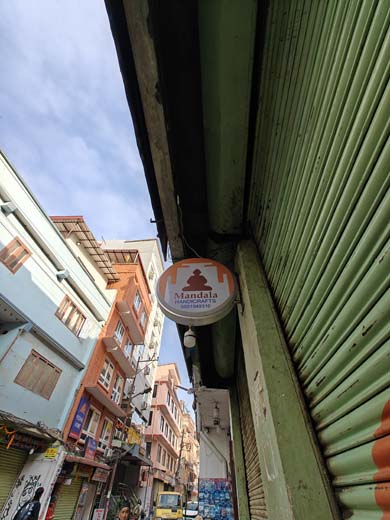
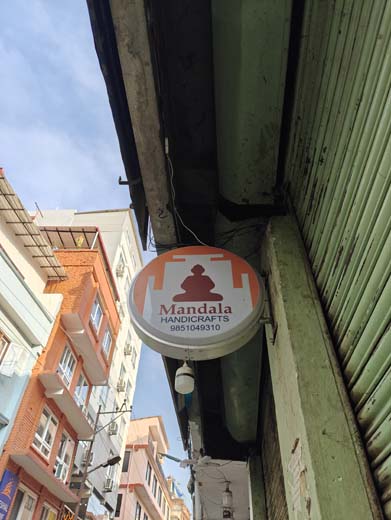














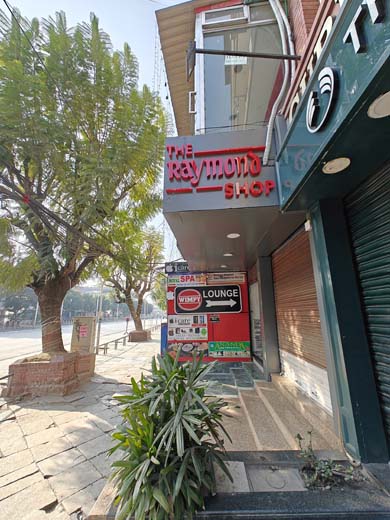
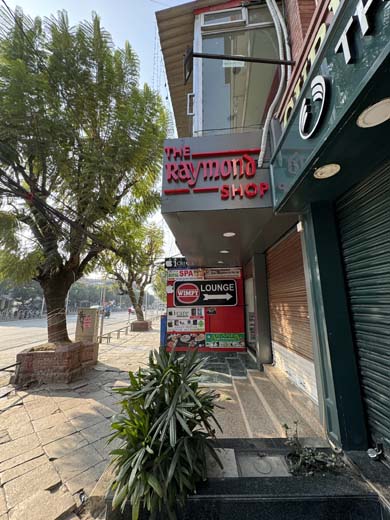
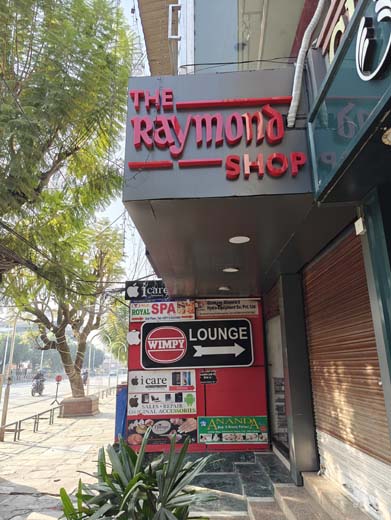
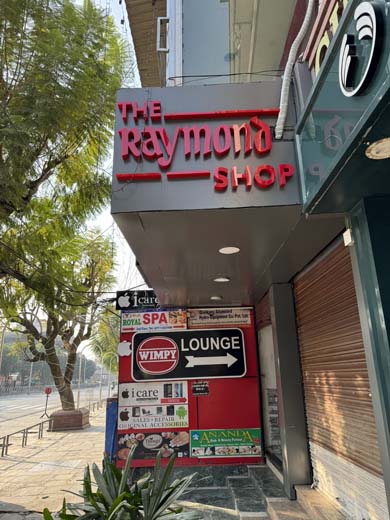
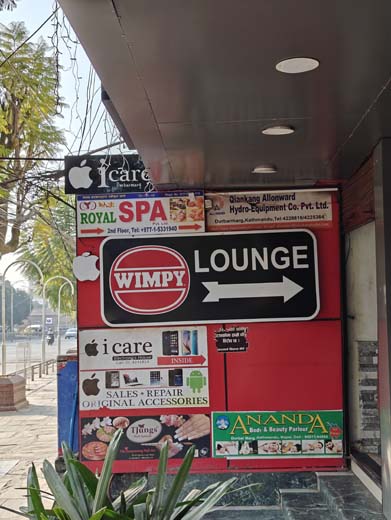
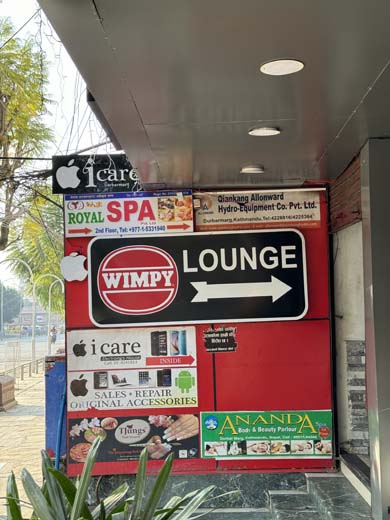



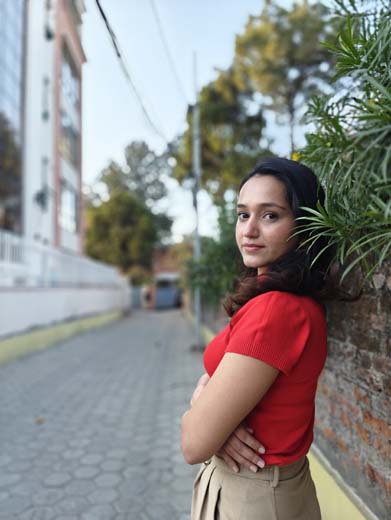
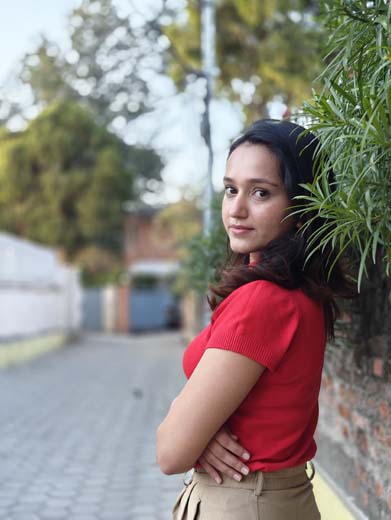










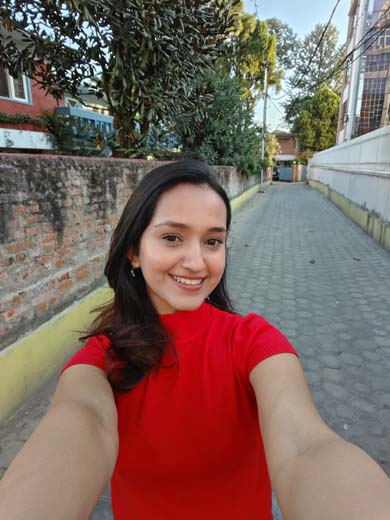
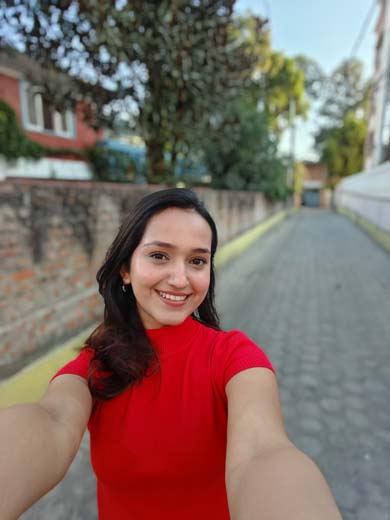
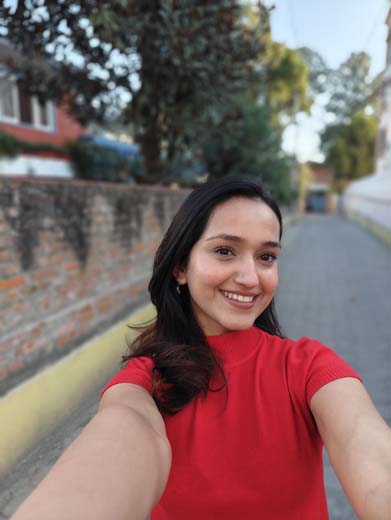



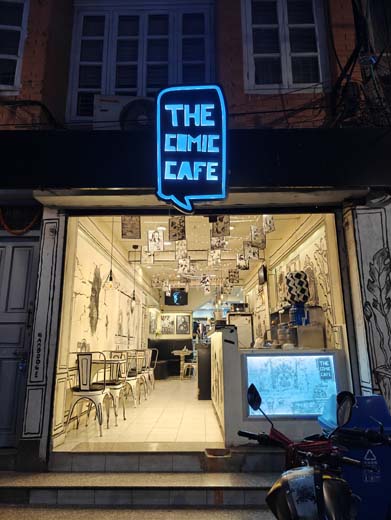
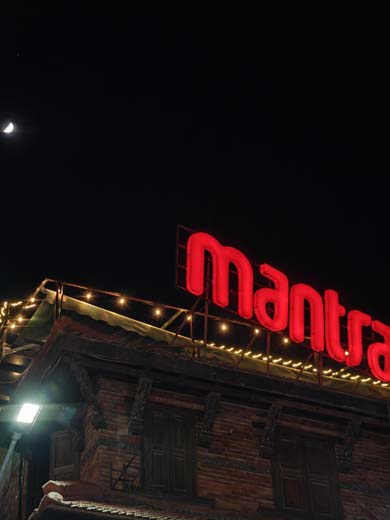



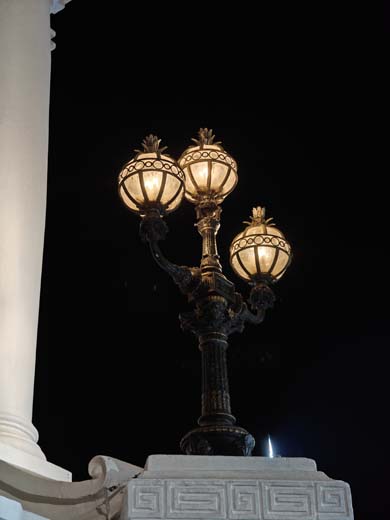


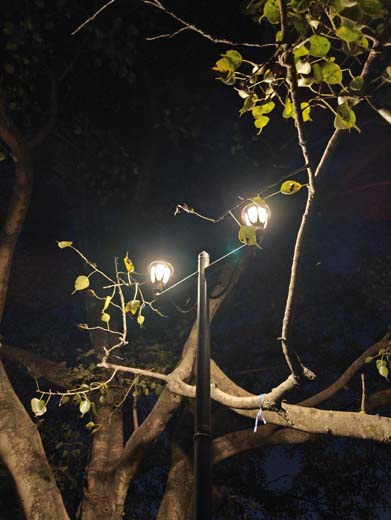
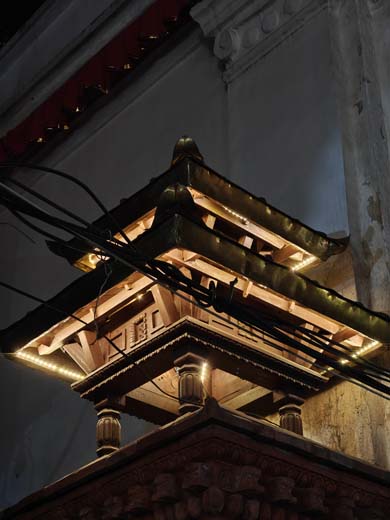
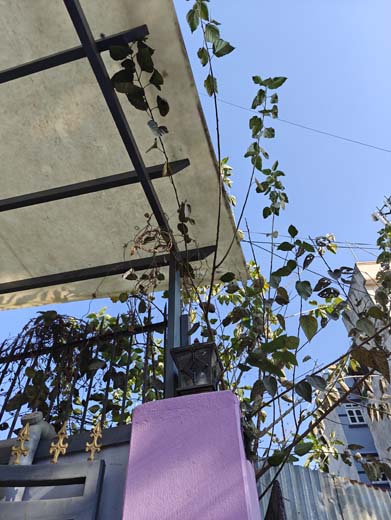
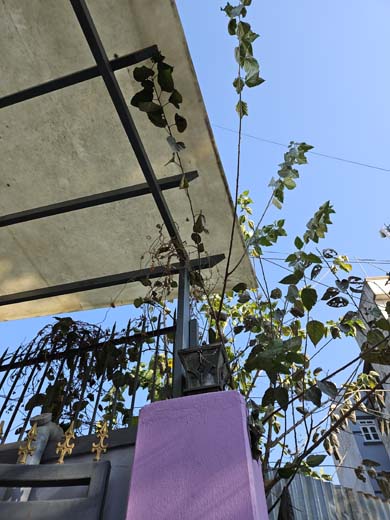
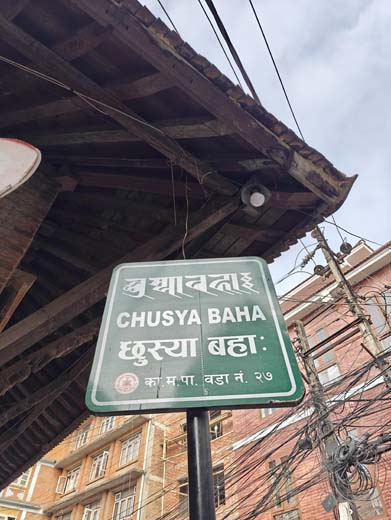
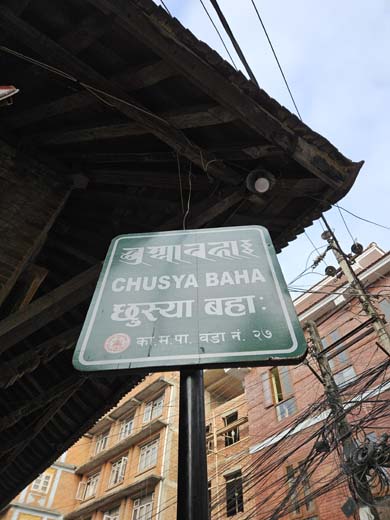









![Best Gaming Laptops in Nepal Under Rs. 250,000 (रु 2.5 Lakhs) [2025] Best Gaming Laptops Under 2.5 lakhs in Nepal [Feb 2025 Update]](https://cdn.gadgetbytenepal.com/wp-content/uploads/2025/02/Best-Gaming-Laptops-Under-2.5-lakhs-in-Nepal-Feb-2025-Update.jpg)
![Best Gaming Laptops in Nepal Under Rs. 120,000 (रु 1.2 Lakhs) [2025] Best Budget Gaming Laptops Under Rs 120000 in Nepal 2025 Update](https://cdn.gadgetbytenepal.com/wp-content/uploads/2025/05/Best-Budget-Gaming-Laptops-Under-Rs-120000-in-Nepal-2024-Update.jpg)
![Best Laptops Under Rs. 80,000 in Nepal [2025] Best Laptops Under 80,000 in Nepal March 2025 Update](https://cdn.gadgetbytenepal.com/wp-content/uploads/2025/03/Best-Laptops-Under-80000-in-Nepal-March-2025-Update.jpg)
![Best Gaming Laptops in Nepal Under Rs. 200,000 (रु 2 Lakhs) [2025] Best gaming lapotp under 2 lakhs Nepal Feb 2025](https://cdn.gadgetbytenepal.com/wp-content/uploads/2025/01/Best-Gaming-Laptops-Under-2-Lakh-Nepal-Feb-2025-Update.jpg)

![Best Mobile Phones Under Rs. 15,000 in Nepal [Updated 2025] Best Phones Under 15000 in Nepal 2024 Budget Smartphones Cheap Affordable](https://cdn.gadgetbytenepal.com/wp-content/uploads/2024/03/Best-Phones-Under-15000-in-Nepal-2024.jpg)
![Best Mobile Phones Under Rs. 20,000 in Nepal [Updated] Best Mobile Phones Under NPR 20000 in Nepal 2023 Updated Samsung Xiaomi Redmi POCO Realme Narzo Benco](https://cdn.gadgetbytenepal.com/wp-content/uploads/2024/01/Best-Phones-Under-20000-in-Nepal-2024.jpg)
![Best Mobile Phones Under Rs. 30,000 in Nepal [Updated 2025] Best Phones Under 30000 in Nepal](https://cdn.gadgetbytenepal.com/wp-content/uploads/2025/01/Best-Phones-Under-30000-in-Nepal.jpg)
![Best Mobile Phones Under Rs. 40,000 in Nepal [Updated 2025] Best Phones Under 40000 in Nepal 2024 Smartphones Mobile Midrange](https://cdn.gadgetbytenepal.com/wp-content/uploads/2024/02/Best-Phones-Under-40000-in-Nepal-2024.jpg)
![Best Mobile Phones Under Rs. 50,000 in Nepal [Updated 2025] Best Phones Under 50000 in Nepal](https://cdn.gadgetbytenepal.com/wp-content/uploads/2025/01/Best-Phones-Under-50000-in-Nepal.jpg)
![Best Flagship Smartphones To Buy In Nepal [Updated] Best flagship phone 2025](https://cdn.gadgetbytenepal.com/wp-content/uploads/2024/07/Best-Flagship-Phones-who-is-it-ft-1.jpg)